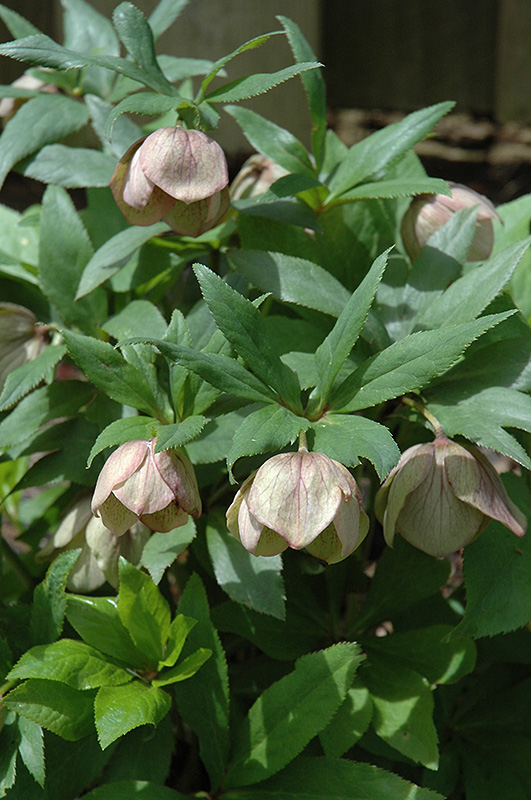Plant Finder
Sopron Hellebore*
Helleborus foetidus 'Sopron'
* This is a "special order" plant - contact store for details
Height: 24 inches
Spacing: 14 inches
Sunlight:
![]()
![]()
Hardiness Zone: 4b
Other Names: Stinking Hellebore
Description:
Buttercup-type dangling clusters of flowers are small and chartreuse colored, emerge in late winter and spring, one of the first flowers to come up in cool weather and a harbinger of spring; attractive metallic blue-green leaves, has a fetid odor
Ornamental Features
Sopron Hellebore features showy nodding chartreuse cup-shaped flowers at the ends of the stems from late winter to early spring. Its glossy pointy compound leaves remain bluish-green in color throughout the year.
Landscape Attributes
Sopron Hellebore is an herbaceous evergreen perennial with an upright spreading habit of growth. Its relatively fine texture sets it apart from other garden plants with less refined foliage.
This is a relatively low maintenance plant, and should be cut back in late fall in preparation for winter. Deer don't particularly care for this plant and will usually leave it alone in favor of tastier treats. It has no significant negative characteristics.
Sopron Hellebore is recommended for the following landscape applications;
- Mass Planting
- Rock/Alpine Gardens
- Border Edging
- General Garden Use
- Naturalizing And Woodland Gardens
Planting & Growing
Sopron Hellebore will grow to be about 20 inches tall at maturity, with a spread of 18 inches. When grown in masses or used as a bedding plant, individual plants should be spaced approximately 14 inches apart. Its foliage tends to remain dense right to the ground, not requiring facer plants in front. It grows at a medium rate, and under ideal conditions can be expected to live for approximately 5 years. As an evegreen perennial, this plant will typically keep its form and foliage year-round.
This plant does best in partial shade to shade. It does best in average to evenly moist conditions, but will not tolerate standing water. It is not particular as to soil pH, but grows best in rich soils. It is somewhat tolerant of urban pollution, and will benefit from being planted in a relatively sheltered location. This is a selected variety of a species not originally from North America, and parts of it are known to be toxic to humans and animals, so care should be exercised in planting it around children and pets. It can be propagated by division; however, as a cultivated variety, be aware that it may be subject to certain restrictions or prohibitions on propagation.
* This is a "special order" plant - contact store for details
